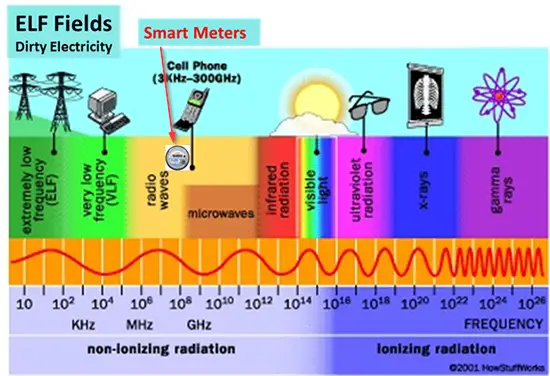The future of the gold standard refers to the potential reimplementation of a monetary system where the value of a country’s currency is directly linked to a specific amount of gold. Historically, the gold standard provided stability to economies by preventing excessive inflation and ensuring a fixed exchange rate between currencies. However, most countries abandoned the gold standard in the 20th century in favor of fiat currencies, which are not backed by physical commodities. In recent years, there has been debate about the possibility of returning to a gold standard as a solution to economic instability and currency devaluation. Advocates argue that a gold-backed system could promote fiscal discipline, limit government spending, and restore confidence in currencies. However, critics contend that the gold standard could constrain economic growth and flexibility, as it might not provide enough liquidity to support modern, dynamic economies. The future of the gold standard remains uncertain, with differing opinions among economists, policymakers, and financial experts. Some countries might explore partial gold backing or create digital currencies tied to gold reserves, while others may continue to rely on fiat currencies and alternative monetary policies. The outcome will depend on various economic, political, and global factors shaping the financial landscape in the coming years.
In an era marked by rapid technological advancements, economic volatility, and a growing distrust in fiat currencies, the concept of a return to the gold standard has gained prominence among economists, policymakers, and investors alike. Advocates of the gold standard argue that it could provide a stable and reliable monetary system, serving as a safeguard against inflation and currency devaluation. On the other hand, critics contend that it is a relic of the past, unsuitable for a modern, interconnected global economy. In this comprehensive analysis, we will delve into the potential future of the gold standard, its historical context, the arguments for and against its implementation, and its feasibility in the 21st century.
The Historical Significance of the Gold Standard
The gold standard is not a new concept; it has a rich history that spans centuries. While variations of the gold standard existed as far back as ancient Egypt, the modern gold standard emerged in the 19th century and persisted through the early 20th century. During this period, the value of a country’s currency was tied to a specific quantity of gold, ensuring that the supply of money remained stable and predictable. The classical gold standard, which prevailed from 1870 to 1914, was characterized by a fixed exchange rate system among major industrialized nations. In this system, governments held gold reserves to back their currencies, and individuals could exchange banknotes for a corresponding amount of gold. The stability and predictability it offered made it a foundation for international trade and finance. However, the gold standard was not without its flaws. It constrained the ability of central banks to manage monetary policy during economic crises, and the supply of gold couldn’t always keep pace with the growing global economy, leading to periods of deflation and financial instability. Ultimately, the classical gold standard collapsed during World War I as countries abandoned it to finance the war effort.
The Arguments For a Return to the Gold Standard
Proponents of a return to the gold standard present several compelling arguments in its favor:
- Inflation Control: One of the most significant arguments for the gold standard is its ability to act as a hedge against inflation. Since the supply of gold grows relatively slowly, it prevents governments from printing excessive amounts of money, which can lead to inflation. This stability in the money supply can provide confidence in the currency’s long-term value.
- Fiscal Discipline: Advocates contend that a gold standard would impose fiscal discipline on governments, as they would be unable to run unsustainable deficits without facing potential currency devaluation. This constraint could lead to more responsible fiscal policies.
- Financial Stability: The gold standard has the potential to reduce financial instability by discouraging speculative bubbles and excessive risk-taking. Without the ability to manipulate interest rates, central banks would be less likely to create conditions conducive to asset bubbles.
- Exchange Rate Stability: A gold standard could promote exchange rate stability, reducing currency fluctuations and trade imbalances. This would be particularly beneficial for international trade and investment.
- Trust and Confidence: A return to the gold standard could instill trust and confidence in the monetary system, both domestically and internationally. This trust may lead to increased investment and economic growth.
The Arguments Against a Return to the Gold Standard
Critics of the gold standard, on the other hand, raise several valid concerns:
- Economic Flexibility: One of the primary arguments against the gold standard is that it limits the ability of governments and central banks to respond to economic crises. In times of recession or financial instability, central banks would have their hands tied, unable to adjust interest rates or implement unconventional monetary policies to stimulate the economy.
- Limited Money Supply Growth: The supply of gold grows slowly, which can hinder economic growth and expansion. Critics argue that a fixed money supply may not be suitable for a dynamic, growing global economy.
- Historical Failures: The gold standard has been associated with financial crises and economic downturns in the past. For example, the Great Depression of the 1930s is often attributed, in part, to the constraints of the gold standard.
- Inequality: Some argue that a gold standard could exacerbate wealth inequality, as those who own significant gold reserves would have more influence over the monetary system.
- Practical Challenges: Implementing a modern gold standard would require overcoming various practical challenges, including the need for massive gold reserves, securing those reserves against theft or misuse, and addressing the lack of fungibility in gold.
The Feasibility of a Modern Gold Standard
To assess the feasibility of a modern gold standard, we must consider the following key factors:
- Gold Reserves: A return to the gold standard would require countries to hold substantial gold reserves to back their currencies. This would necessitate massive gold acquisitions or repatriation of existing reserves. However, obtaining enough gold to support a global system could be a significant logistical challenge.
- Security and Transparency: Safeguarding these gold reserves against theft or misuse would be essential. This would require robust security measures and transparency in the handling of gold assets.
- Fungibility: One of the challenges associated with gold is its lack of fungibility, as different types of gold have varying degrees of purity and quality. Establishing a standard for acceptable gold reserves would be necessary.
- Economic Consequences: Transitioning to a gold standard would likely have significant economic consequences, potentially causing disruptions, and it could lead to deflation and economic contractions in the short term.
- International Cooperation: Implementing a global gold standard would require extensive international cooperation, as well as coordination between central banks and governments to establish consistent rules and standards.
The Role of Digital Gold: A Potential Solution
In the 21st century, the concept of a gold standard is being revisited in light of technological advancements. One proposed solution to the logistical challenges of a modern gold standard is the emergence of digital gold, often represented by cryptocurrencies backed by gold reserves. These digital tokens are backed by physical gold stored in secure vaults, offering a digital representation of the traditional gold standard.
Digital gold offers several potential advantages:
- Accessibility: Digital gold provides an accessible and convenient way for individuals to invest in and hold gold without the need for physical storage.
- Fractional Ownership: Digital gold can be divided into smaller units, making it more accessible to a wider range of investors.
- Transparency: Blockchain technology, which underpins many digital gold tokens, offers transparency and auditability of gold reserves, reducing the risk of fraud or mismanagement.
- Cross-Border Transactions: Digital gold can facilitate international trade by providing a stable, universally recognized medium of exchange.
- Liquidity: Digital gold tokens can be easily traded on various cryptocurrency exchanges, providing liquidity and flexibility for investors.
Despite these advantages, digital gold also faces its own set of challenges, including regulatory scrutiny, concerns about the custodianship of physical gold, and potential issues related to tokenization and security.
Conclusion
The debate over the future of the gold standard remains complex and multifaceted. Advocates argue that it can provide stability, control inflation, and promote responsible fiscal policies, while critics point to historical failures, limited economic flexibility, and practical challenges. Implementing a modern gold standard would require substantial coordination and adaptation to the current global economic landscape. Digital gold offers a potential solution to some of the logistical challenges, providing accessibility, transparency, and liquidity. However, it, too, comes with its own set of issues that need to be addressed. Ultimately, the future of the gold standard will depend on a careful evaluation of its merits and drawbacks, as well as innovative solutions to overcome the practical challenges associated with its implementation. As the world continues to grapple with economic uncertainties and seeks stable monetary systems, the debate surrounding the gold standard is likely to persist, shaping the future of global finance.







Leave a Reply